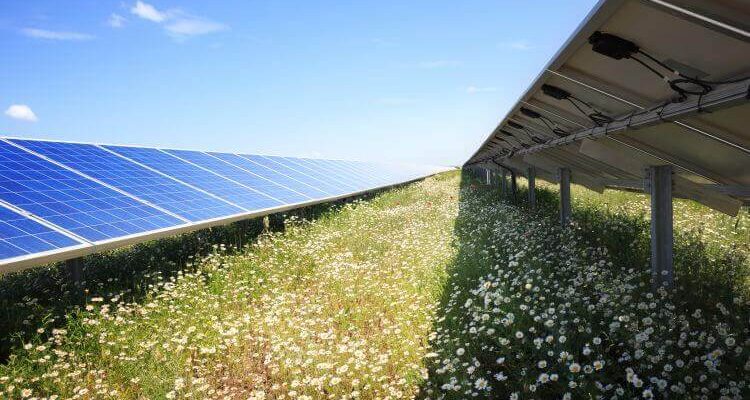Solar Parks Are Benefitting Biodiversity
A newly published study by the german New Energy Industry Association (Bundesverband Neue Energiewirtschaft – bne) has examined the influence of solar parks over the biodiversity of their respective areas.
This study (available in German here) addressed one of the central questions of the energy transition – namely whether the optimal use of our scarce land resources could be tackled all together: climate protection, agriculture and nature conservation. The study concludes that photovoltaic systems on open spaces have a positive effect on biodiversity.
The authors, Rolf Peschel, Dr. Tim Peschel, Dr. Martine Marchand and Jörg Hauke, wanted to show whether and to what extent open space with photovoltaic systems can contribute to the flora and fauna biodiversity.
Procedure of The Study
The authors studied the documentation on vegetation and fauna of over 75 solar parks located in 9 different federal states (Länder) in Germany. In most cases, the documents used were from the approval stage of the solar parks.
At least 40 % of the examined parks had a documentation that could be used for the evaluation. They compared the parks conditions before and after PV-systems were installed, and found a positive impact that can be linked to the spacing of the modules and the maintenance of these rows interspaces. The authors also evaluated the colonisation of the parks by different group of animals and plants, and found similar results in similar studies performed in the UK.
Important Results
The evaluation led to these main results:
- Using open spaces for PV systems does not only contribute to climate protection by producing renewable energy; it also preserves biological diversity. Designing the PV system in a way that is compatible with nature is a must to have this positive impact.
- One of the main reasons for this positive effect is that the maintenance of grassland in the interspaces of the module rows favours the colonisation of the open spaces with different animal groups (insects, amphibians, bats, reptiles, breeding birds, …). This contrasts with agriculture-intensive lands suffering monoculture, or the soils used to produce energy from the biomass. Looking at butterflies, grasshoppers and breeding birds, the study demonstrated that solar systems promote biodiversity in comparison to the surrounding landscape.
- Particularly noteworthy are the differences in the effects between wide and narrow distances between the module series. The study showed that wide and sunny interspaces promote increased species and individual densities, namely for insects, reptile and breeding bird colonisation and particularly for sand lizards.
- The analysis also revealed a possible trend in the difference between the importance of small PV systems and large-area systems. Smaller systems in particular act as steppingstone biotopes, which can thus preserve or restore habitat corridors. Large PV systems areas, on the other hand, can form sufficiently large habitats for the preservation or development of populations, e.g. of sand lizards or breeding birds.
- Solar parks on conversion areas are of great importance because they can help to stop the succession of vegetation leading to the loss of open, sunny habitats.
- The study also shows that there is a need for further research. There is often a lack of monitoring of the colonisation of the solar parks after construction of the facilities, which would highlight their importance even more.
- The study also provides information on the content, structure and scope of future monitoring studies. One goal of such monitoring could be to develop uniform minimum standards for the construction of solar parks in the medium term.
According to ESD, the study should be continued on an ongoing basis by including more and more parks in the evaluation.
Our Conclusion
The findings from this study, which show that solar parks are a gain for biodiversity, should help us not only to further increase public acceptance of this type of renewable energy generation and to counter critics with resilient arguments, but also to support discussions and negotiations with nature conservation authorities in the approval process for new parks.
High public acceptance and benevolent support from nature conservation authorities will help to drive forward the ambitious and necessary expansion of solar energy.
Source: Federal association new energy industry registered association.
This article is a free translation from its original German version: Neue Studie zeigt: Solarparks sind ein Gewinn für die Biodiversität
Photo: © fenriswolf





